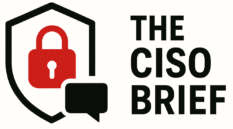Top Highlights
-
Vulnerability Exposure: Nearly 35,000 solar power devices, crucial for energy infrastructure, are openly accessible online, heightening cybersecurity risks according to Forescout.
-
Geographic Distribution: Most exposed devices are concentrated in Europe (75%) and Asia (17%), with Germany and Greece housing significant numbers.
-
Outdated Equipment Risks: Discontinued equipment like SMA’s Sunny WebBox continues to be a security liability despite known vulnerabilities, making them prime targets for cyber threats.
- Urgent Need for Security: The report highlights the critical need for robust cybersecurity practices and visibility in managing infrastructure to mitigate the risks of digitalization in the energy sector.
Rising Risks in Solar Power Management
An alarming report reveals that nearly 35,000 solar power devices are exposed online. This number signifies a critical vulnerability in our renewable energy landscape. A wide range of manufacturers contributes to this issue, with devices equipped with remote management interfaces. While some of these interfaces may employ password protection, many do not require online access. Consequently, this oversight places essential solar infrastructure at risk.
The ten vendors with the most exposed devices have historically disclosed vulnerabilities, making their products particularly susceptible. For example, SMA’s Sunny WebBox frequently appears on exposure lists, despite being discontinued in 2015. Experts warn that internet-exposed devices with known issues create dangerous scenarios. The combination of accessible solar power equipment and outdated security practices raises serious concerns about cybersecurity threats and operational stability.
Moving Forward: Strategies for Security
The increasing digitization of power grids complements the drive toward renewable energy but introduces significant cybersecurity challenges. It is crucial for operators to gain visibility over their devices. Many operators may not even be aware of all the devices they manage, exposing them to potential exploits. As the energy sector continues to embrace connectivity, ensuring robust security measures becomes essential.
Moreover, an “assume-breach” mindset must guide the approach to securing these systems. Cybersecurity experts emphasize that mere access, rather than sophisticated tools, enables attackers to exploit vulnerabilities. To enhance resilience, energy providers must prioritize asset visibility and communication mapping. Only through proactive management can we safeguard our solar power infrastructure and secure our transition to renewable energy.
Discover More Technology Insights
Stay informed on the revolutionary breakthroughs in Quantum Computing research.
Explore past and present digital transformations on the Internet Archive.
Cybersecurity-V1

